Synecdoche is a rhetorical device which makes use of a term that refers to a part of something to substitute for the whole thing.
What Is Synecdoche? – Meaning and Definition
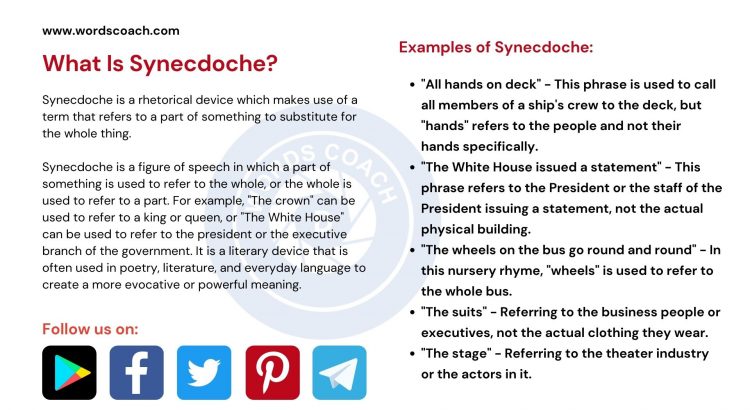
Synecdoche is a rhetorical device which makes use of a term that refers to a part of something to substitute for the whole thing.
What Is Synecdoche? – Meaning and Definition
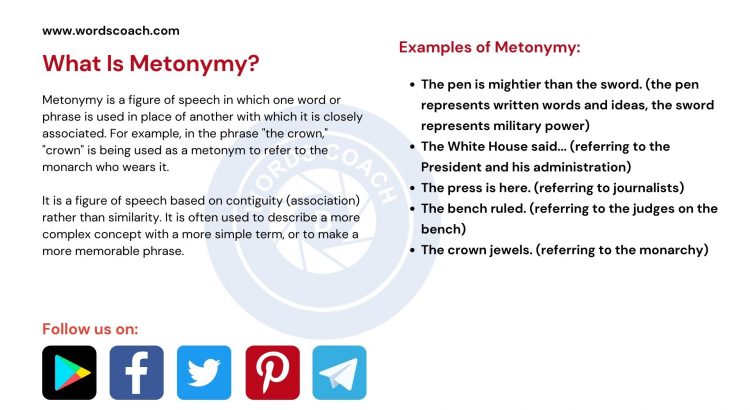
Metonymy is a figure of speech in which one word or phrase is used in place of another with which it is closely associated. For example, in the phrase “the crown,” “crown” is being used as a metonym to refer to the monarch who wears it.
Metonymy – Definition, Meaning, and How to Use with Examples
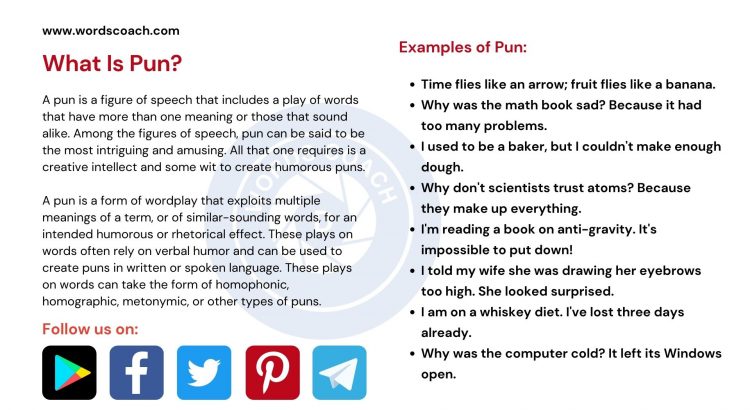
A pun is a form of wordplay that exploits multiple meanings of a term, or of similar-sounding words, for an intended humorous or rhetorical effect. These plays on words often rely on verbal humor and can be used to create puns in written or spoken language. These plays on words can take the form of homophonic, homographic, metonymic, or other types of puns.
Pun – Definition, How to Use, and Examples
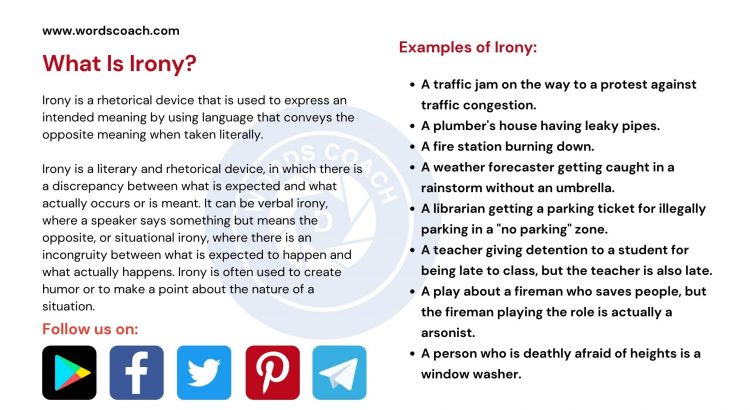
Irony is a rhetorical device that is used to express an intended meaning by using language that conveys the opposite meaning when taken literally.
What Is Irony? – Meaning and Definition
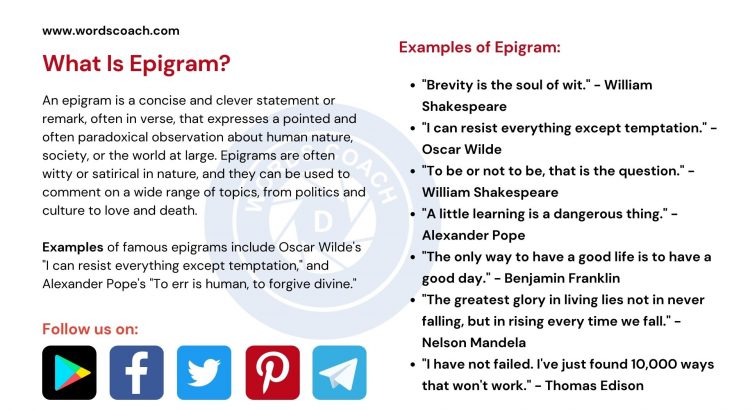
An epigram is a concise and clever statement or remark, often in verse, that expresses a pointed and often paradoxical observation about human nature, society, or the world at large. Epigrams are often witty or satirical in nature, and they can be used to comment on a wide range of topics, from politics and culture to love and death.
Epigram – Explore Meaning, Definition, and Examples
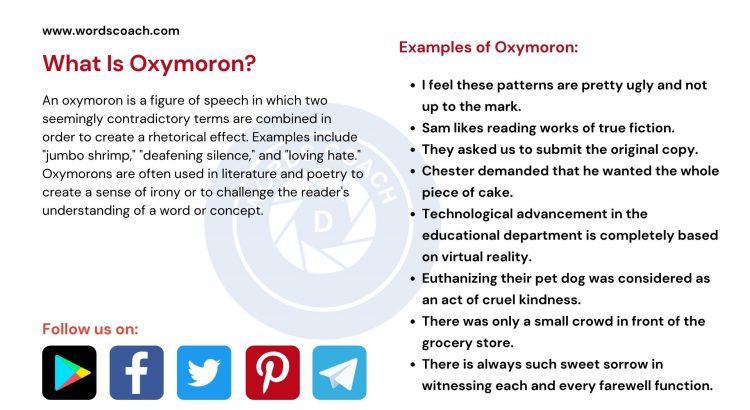
An oxymoron is a figure of speech in which two seemingly contradictory terms are combined in order to create a rhetorical effect. Examples include “jumbo shrimp,” “deafening silence,” and “loving hate.”
What Is Oxymoron? – Meaning and Definition
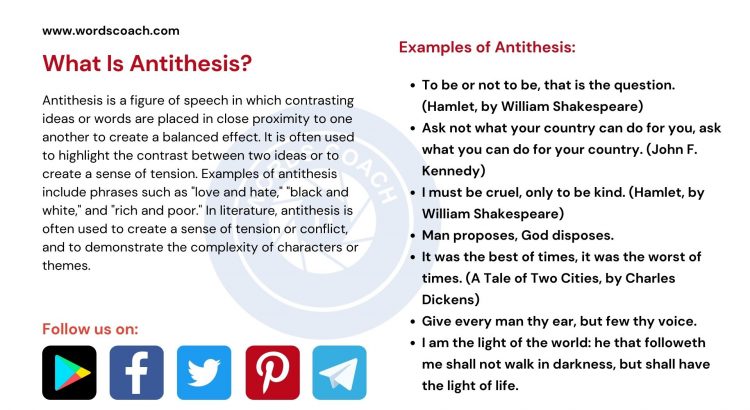
Antithesis is a figure of speech in which contrasting ideas or words are placed in close proximity to one another to create a balanced effect. It is often used to highlight the contrast between two ideas or to create a sense of tension. Examples of antithesis include phrases such as “love and hate,” “black and white,” and “rich and poor.” In literature, antithesis is often used to create a sense of tension or conflict, and to demonstrate the complexity of characters or themes.
Antithesis: Meaning, Definition and Examples
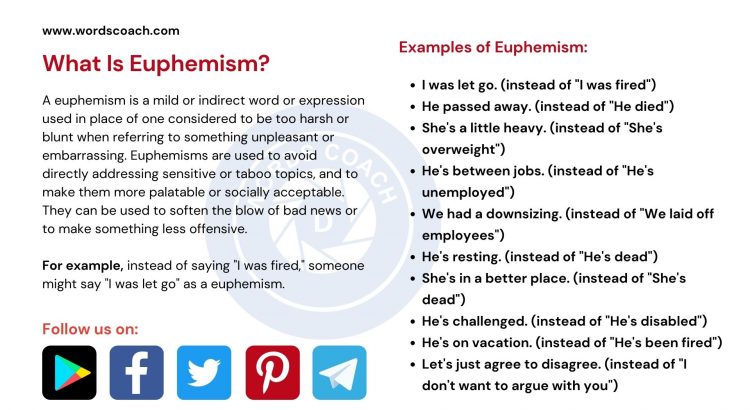
A euphemism is a mild or indirect word or expression used in place of one considered to be too harsh or blunt when referring to something unpleasant or embarrassing. Euphemisms are used to avoid directly addressing sensitive or taboo topics, and to make them more palatable or socially acceptable. They can be used to soften the blow of bad news or to make something less offensive.
What Is Euphemism? – Meaning and Definition
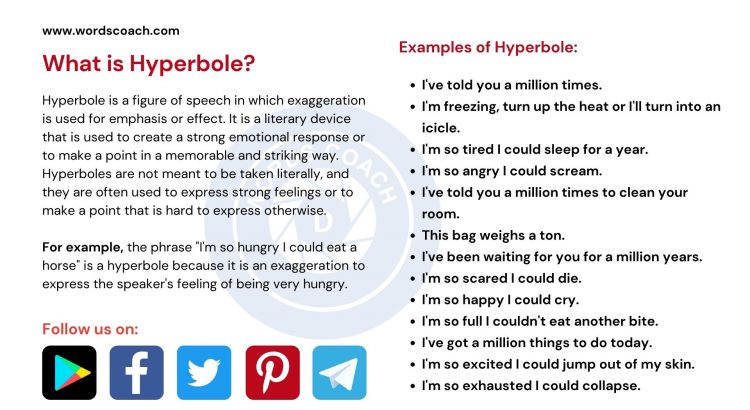
Hyperbole is a figure of speech in which exaggeration is used for emphasis or effect. It is a literary device that is used to create a strong emotional response or to make a point in a memorable and striking way. Hyperboles are not meant to be taken literally, and they are often used to express strong feelings or to make a point that is hard to express otherwise.
What Is Hyperbole? – Meaning and Definition
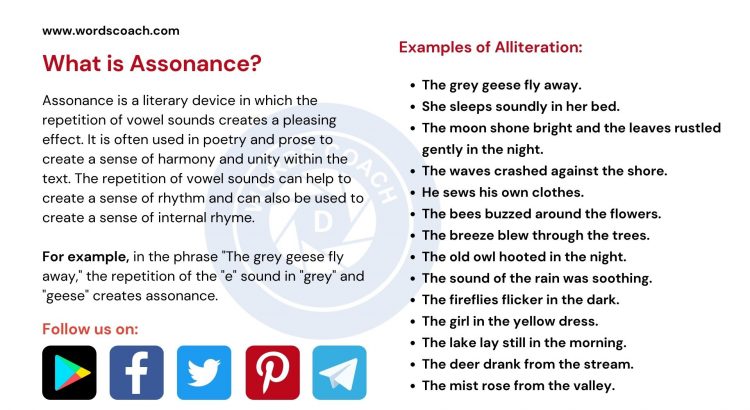
Assonance is a literary device in which the repetition of vowel sounds creates a pleasing effect. It is often used in poetry and prose to create a sense of harmony and unity within the text. The repetition of vowel sounds can help to create a sense of rhythm and can also be used to create a sense of internal rhyme.
Assonance – Meaning, Definition, Usage and Examples
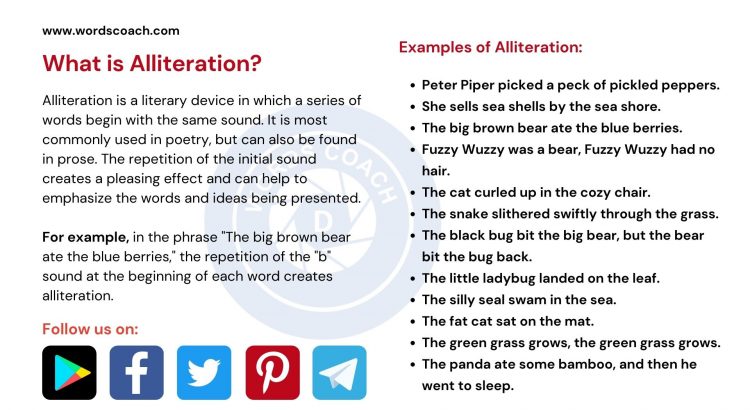
Alliteration is a literary device in which a series of words begin with the same sound. It is most commonly used in poetry, but can also be found in prose. The repetition of the initial sound creates a pleasing effect and can help to emphasize the words and ideas being presented.
Here are 20 examples of alliteration:
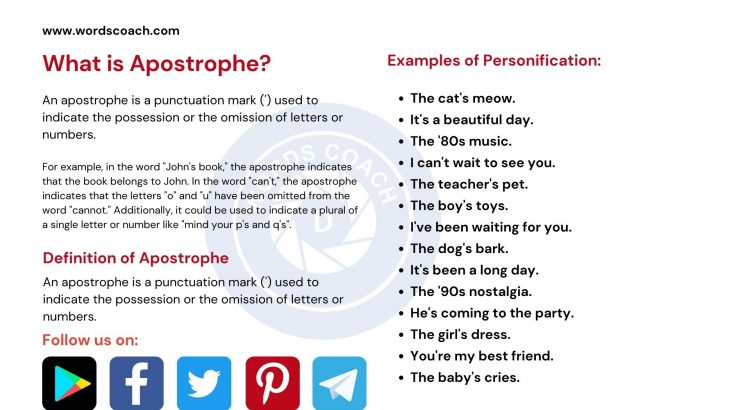
An apostrophe is a punctuation mark (‘) used to indicate the possession or the omission of letters or numbers.
Definition of Apostrophe
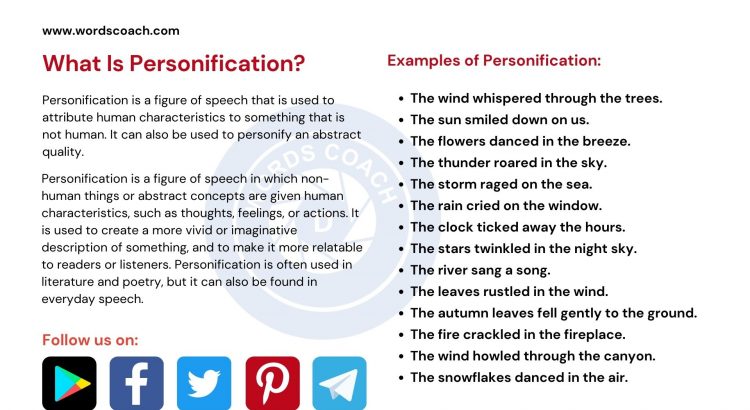
Personification is a figure of speech that is used to attribute human characteristics to something that is not human. It can also be used to personify an abstract quality.
For example, “the wind whispered through the trees” is an example of personification because the wind cannot literally whisper, but the comparison is used to create a more descriptive and imaginative image.
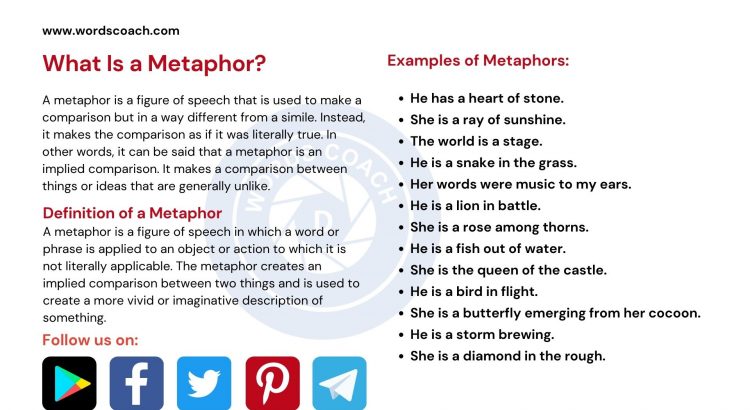
A metaphor is a figure of speech that is used to make a comparison but in a way different from a simile. Instead, it makes the comparison as if it was literally true. In other words, it can be said that a metaphor is an implied comparison. It makes a comparison between things or ideas that are generally unlike.
Definition of a Metaphor
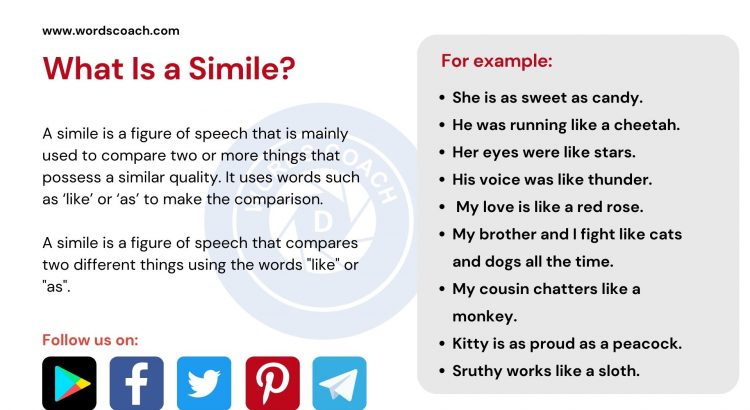
A simile is a figure of speech that is mainly used to compare two or more things that possess a similar quality. It uses words such as ‘like’ or ‘as’ to make the comparison.
A simile is a figure of speech that compares two different things using the words “like” or “as”.
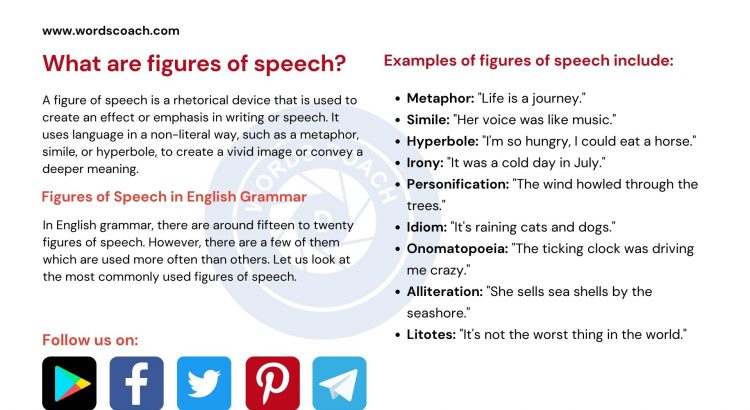
A figure of speech is a rhetorical device that is used to create an effect or emphasis in writing or speech. It uses language in a non-literal way, such as a metaphor, simile, or hyperbole, to create a vivid image or convey a deeper meaning.
Definition of a Figure of Speech